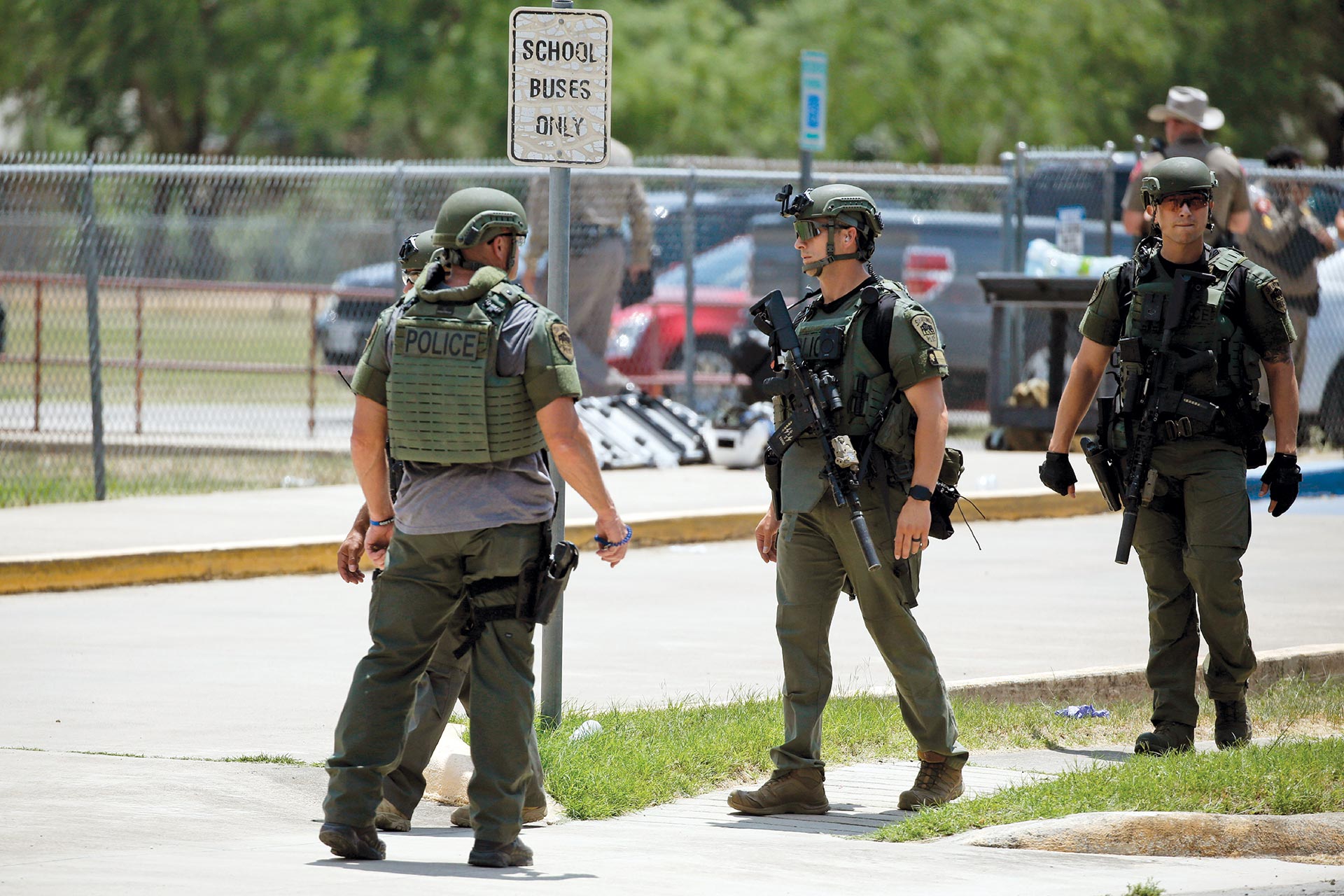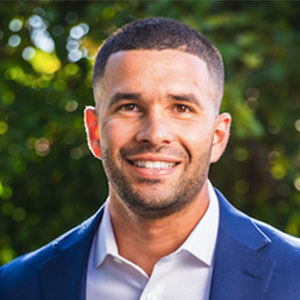[ad_1]

I began writing this article the day before the tragedy at Robb Elementary School in Uvalde, Texas. The specific topic and submission date were established months ago. However, as the information regarding the events of May 24 began to come out, this article went through numerous revisions. I have struggled with it because the horrific events at Robb Elementary have brought to the surface the rawest of emotions: Fear as a parent of school-aged children. Hopelessness as the spouse of an educator. Anger as a law enforcement officer. Pure disbelief and disgust as an active shooter response trainer.
As I submit this article, the facts of what happened at Uvalde are still unclear. Like many other
active killer events, there are questions regarding the police response and possible delays in the response times. Rather than place blame at the feet of an evil monster, the missed opportunities for early interventions or the tactical decisions of responding officers, I will first look inward at the role I have played as a trainer.
We need to critically examine how the training we provide may be creating a delayed response time.
Priorities of work
When responding to an active killer event, officers are trained in two priorities of work: stop the killing and stop the dying. The purpose is obvious — stopping the threat minimizes the number of victims. These priorities of work establish the heart of the solo officer mindset. Officers must make contact with the suspect as soon as possible in order to prevent additional casualties.
The problem with this approach is it creates a one-before-the-other mentality for all responding officers — meaning that every officer who responds, regardless of how many officers are already on scene and in the process of stopping the threat, will focus on the first priority. This creates a critical delay in assessing and providing care to victims. An objective examination of these priorities reveals that stopping the dying is the true priority.
I am not recommending that the first officers on scene abandon the hunt and start assessing victims. I am saying that as trainers, we must exploit opportunities to empower officers with the tactical awareness and emotional fitness to understand when one more gun in the fight will not make the difference. Officers’ primary mission at the end of the day is to mitigate the number and severity of casualties. This means the solo officer mindset is fluid throughout the incident. Training should provide officers with scenarios where they have the authority and opportunity to self-deploy into providing tactical combat casualty care, even though there is no confirmation the threat has been neutralized. This shift in mindset can begin when training and policies offer the current priorities of work as a mission statement.
Recommendation: Present the priorities of work as a mission statement with a clear commander’s intent. An example mission statement: Once on scene at an active killer event, officers will immediately move to contact the suspect(s) and stop the killing, by any means necessary, in order to prevent additional civilian casualties. The commander’s intent is for officers to self-deploy and stop the dying by treating and evacuating casualties at the first available opportunity. Time has priority.
Overemphasis on partner and team tactics
In my experience attending active shooter response training, more than 80% of scenarios are built around partner and team tactics. Only 20% of scenarios, if any, are devoted to solo officer response. A focus is placed on partner and team tactics in order to allow officers from different agencies to work together and become more proficient during a multiagency response. I believe this overemphasis on partner and team tactics plants a subconscious seed for officers to wait for backup.
Think about it: Outside of an active killer event, officers are told time and time again to wait for a second unit. In a felony traffic stop, you have all the time in the world. Burglary alarm, all the time in the world. Probable cause search, all the time in the world. It is only during the active killer incident that we emphasize a single-officer response. Yet, when we train, nearly every scenario is done with a partner or as a part of team. As trainers, this is an area we must address and consider how the scenarios we build may be counterproductive to the solo officer mindset we are trying to inspire.
Equally as important is the tremendous loss in developing the individual skill set necessary to confidently and efficiently respond as a solo officer. In basic terms, team tactics are simply individual tactics multiplied. As additional officers jump into the stack, the 540-degree pie becomes more divided. Every officer should be a force multiplier in the fight. However, if officers have not been proficiently trained in individual tactics, the team becomes slowed down and the mission compromised. Furthermore, when responding to a building with multiple rooms and floors, officers must have the necessary confidence and skills to break down into smaller units in order to neutralize the threat and provide care to victims
more quickly.
Recommendation: In training, 80% of active killer scenarios should be focused on solo officer response, with 20% of scenarios equally divided between partner and team tactics. Trainers should not allow students to work on partner or team tactics until they have demonstrated individual skill sets and the proficiency required to stop a threat as a solo officer.
Data-driven training and scenarios
The active killer training and scenarios I have experienced aren’t always representative of the empirical data. The high 90th percentile of active killer events, regardless of weapons used, are committed by a single assailant. This means one in 10 scenarios, if any, should involve multiple assailants. Officers should truly understand the implications of this data in order to minimize chasing “ghost” shooters and transition into providing medical care to victims more quickly.
Like other crimes involving firearms, handguns are the most common and deadliest weapon used in active shooter events. Opposition actors should be armed primarily with handguns. Officers should understand that in the majority of active shooter incidents, they are facing an adversary that is equally armed yet unequally trained.
The majority of victims who could have survived their wounds during an active shooter incident were shot in the chest or upper back, at close distance, with a handgun — read: sucking chest wound and tension pneumothorax. Wounding patterns of victim actors should reflect emergent research, with officers being trained to recognize and treat a sucking chest wound as quickly as possible.
Recommendation: Training scenarios should be aligned to empirical evidence on active killer incidents. For active shooter scenarios, the majority of drills should include a single assailant armed with a handgun. Victim actors should be given a “survivability stopwatch” based on their simulated wounding patterns and mechanism of injury. This timer is a tangible training tool to emphasize the need to provide tactical care as quickly as possible. Officers should be trained to recognize and treat a sucking chest wound and tension pneumothorax on the same level as they are trained to recognize massive hemorrhaging and use a tourniquet.
The trainer in the mirror
The days following May 24, 2022, have been an emotional roller-coaster for parents, educators and our nation as a whole. It would be easy to deflect and place blame on the actions and inactions before, during and after the shooting at Uvalde. However, I must reflect on the possible role I have played as
a trainer.
Has the use of step-based priorities of work planted a subliminal seed for officers to delay their response? In trying to push officers to engage the threat as quickly as possible, have I diverted follow-on assets from self-deploying to mitigate the number of deaths? Has my focus on partner and team tactics stolen away opportunities to build individual skill sets and officers’ confidence in themselves? Have my scenarios represented empirical data and emboldened officers’ resolve to engage the assailant, or have my unrealistic scenarios inadvertently created hesitation? Have I overfocused on training officers to use a tourniquet so they could save my life, or have I placed an equal emphasis on the use of chest seals to save lives of civilians?
As trainers, we must take a hard look in the mirror. We need to critically examine how the training we provide may be creating a delayed response time. Focusing on solo officer tactics and establishing a clear intent for responding officers are changes we must make moving forward. The solo officer response mindset does not end because other officers are on scene.
As seen in the July 2022 issue of American Police Beat magazine.
Don’t miss out on another issue today! Click below:
[ad_2]





